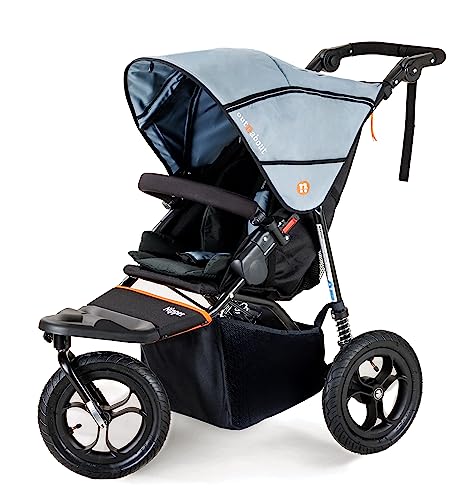Pushchairs: A Simple Definition

Strollers and Pushchairs: The Ultimate Guide for Parents
Selecting the ideal stroller or pushchair is among the most vital choices new moms and dads will make. With a range of alternatives readily available, understanding the distinctions and functions can considerably affect the experience of both parents and children. Pushchairs And Prams intends to light up the distinctions in between both, the aspects to think about when acquiring, and responses to regularly asked questions.
Understanding Strollers and Pushchairs
Strollers and pushchairs are often utilized interchangeably, but subtle distinctions set them apart. A stroller is typically designed for infants and toddlers, offering a more flexible approach with included functions for comfort and safety. On the other hand, pushchairs are normally targeted at older babies who can stay up unaided and tend to be more light-weight and portable.
Secret Differences Between Strollers and Pushchairs
| Feature | Stroller | Pushchair |
|---|---|---|
| Age Range | Newborn to young child | Usually for 6 months to 3 years |
| Weight | Normally much heavier due to additional functions | Lighter and often much easier to bring |
| Recline Position | Can normally recline fully for babies | Restricted recline; often upright |
| Storage Space | More storage compartments and accessories offered | Minimal storage, typically simply a small basket |
| Comfort | Developed with more padding and support | Less cushioning, lighter frame for ease of use |
| Foldability | May have intricate folding systems | Frequently developed to fold easily and compactly |
Elements to Consider When Buying a Stroller or Pushchair
When selecting between a stroller or pushchair, several elements can shape your decision. Here are some vital factors to consider:
1. Safety Features
- Harness system (5-point is the best)
- Stability and strength of the frame
- Brakes that lock firmly
2. Comfort
- Cushioning and support for the child
- Adjustable seat positions
- Ventilation for heat
3. Size and Weight
- How easy is it to carry?
- Will it suit your vehicle?
- Does it take up excessive storage area in your home?
4. Flexibility
- Is it adaptable for safety seat or carrycots?
- Can it deal with different surfaces (metropolitan vs rural)?
5. Cost
- What is your budget plan?
- Does the stroller/pushchair offer worth for its functions?
6. Relieve of Use
- How easily can it be folded and unfolded?
- Is it easy to browse through crowds or tight spaces?
7. Durability
- What materials are utilized?
- For how long is the warranty?
8. Brand Reputation
- Look for brand names known for producing quality items.
- Check out evaluations from other moms and dads.
The Types of Strollers and Pushchairs
Strollers and pushchairs come in numerous designs, each catering to specific requirements. Here's an overview:
1. Basic Strollers
- Durable and well-padded.
- Ideal for daily usage.
2. Lightweight Strollers
- Extremely portable and easy to carry.
- Ideal for travel.
3. Jogging Strollers
- Created for active moms and dads.
- Can handle rugged surfaces.
4. Convertible Strollers
- Can adapt from a single to double stroller.
- Versatile and grows with the family.
5. Travel Systems
- Includes a baby vehicle seat and a stroller.
- Offers seamless transitions from vehicle to stroller.
6. Umbrella Strollers
- Exceptionally portable and economical.
- Best for quick journeys and older babies.
| Kind of Stroller | Pros | Cons |
|---|---|---|
| Basic | Sturdy, comfortable | Heavier and bulkier |
| Lightweight | Easy to carry | Restricted features |
| Jogging | Great for workout and outdoor usage | Might not appropriate for babies |
| Convertible | Adaptable for growing households | Bulkier than basic strollers |
| Travel System | Benefit of combined needs | Can be expensive |
| Umbrella | Very portable | Less durable |
FAQs About Strollers and Pushchairs
Q1: At what age can a baby utilize a stroller?
Many strollers appropriate for use from birth if they fully recline. Ensure to examine manufacturer standards, as some may only accommodate babies over six months.
Q2: How do I tidy my stroller or pushchair?
A lot of strollers have detachable and washable fabrics. Usage mild soap and water for the frame and examine the fabric labels for particular cleansing guidelines.
Q3: Can I use a stroller on numerous surfaces?
Yes, specific types, like jogging strollers or all-terrain strollers, are specifically designed for unequal surfaces. Nonetheless, some lightweight models are not ideal for rough surface.
Q4: How long can I anticipate my stroller to last?
Quality strollers can last numerous years, frequently until the child is around 4 to 5 years of ages, depending on use and care.
Q5: Are strollers safe for over night sleeping?
While some strollers provide flat recline positions that appropriate for infant sleep, it's vital to follow security guidelines and monitor the child while in the stroller.
Picking the best stroller or pushchair is a decision that extends beyond simple option; it improves the parenting experience and ensures the security and convenience of the kid. By understanding the distinctions, examining different aspects, and exploring the types readily available, moms and dads can make an educated decision that accommodates their way of life and meets the requirements of their growing household. Remember to constantly focus on security and comfort above whatever!

